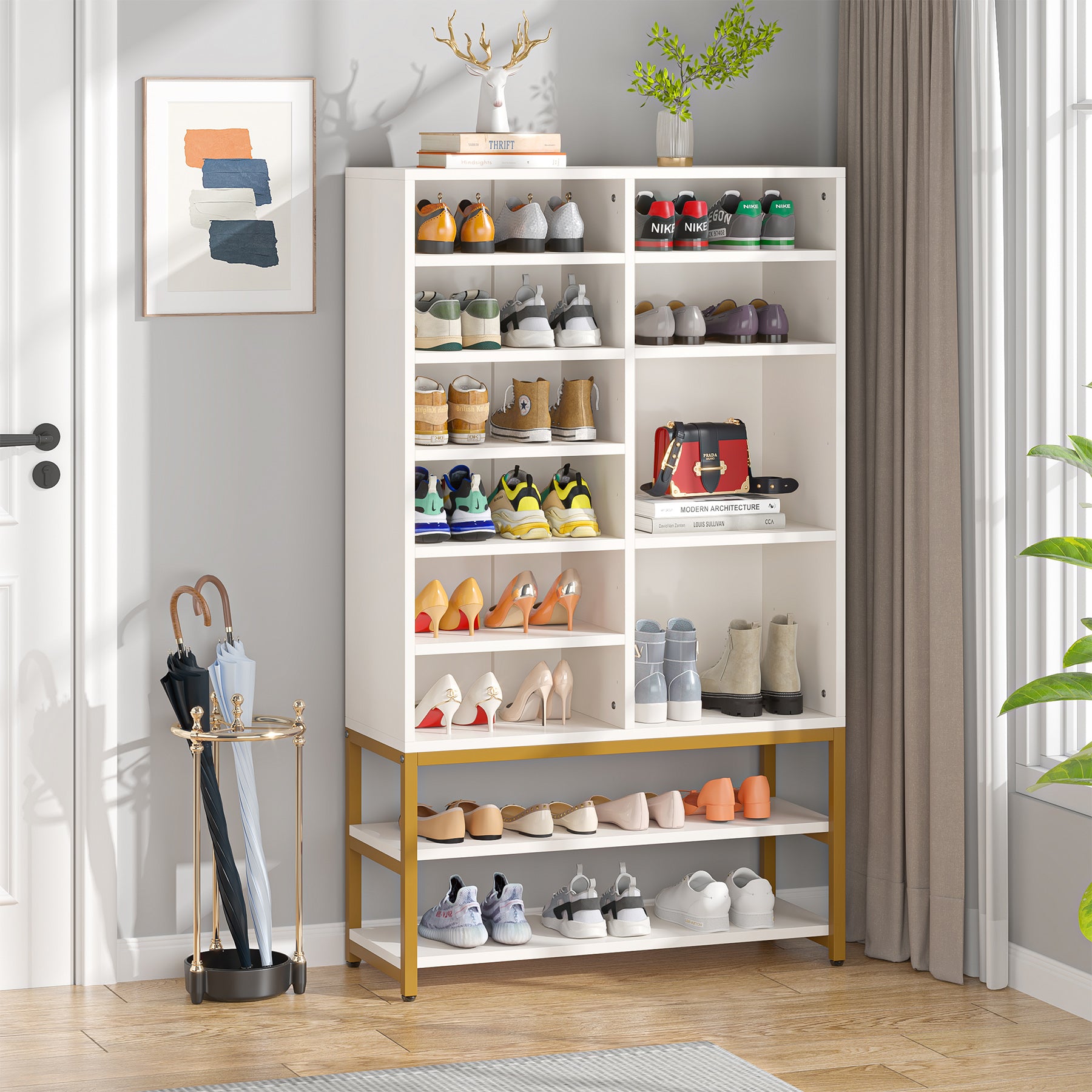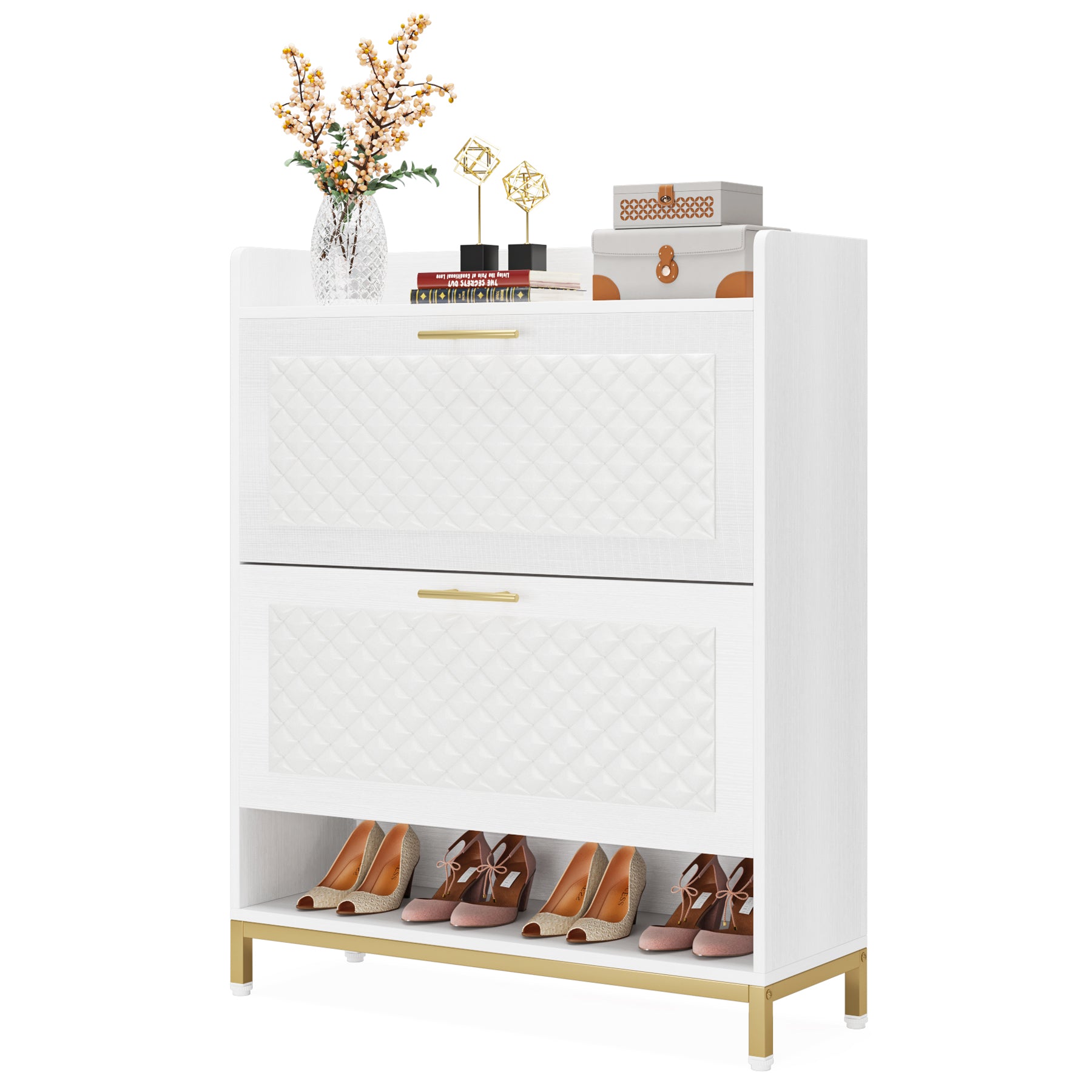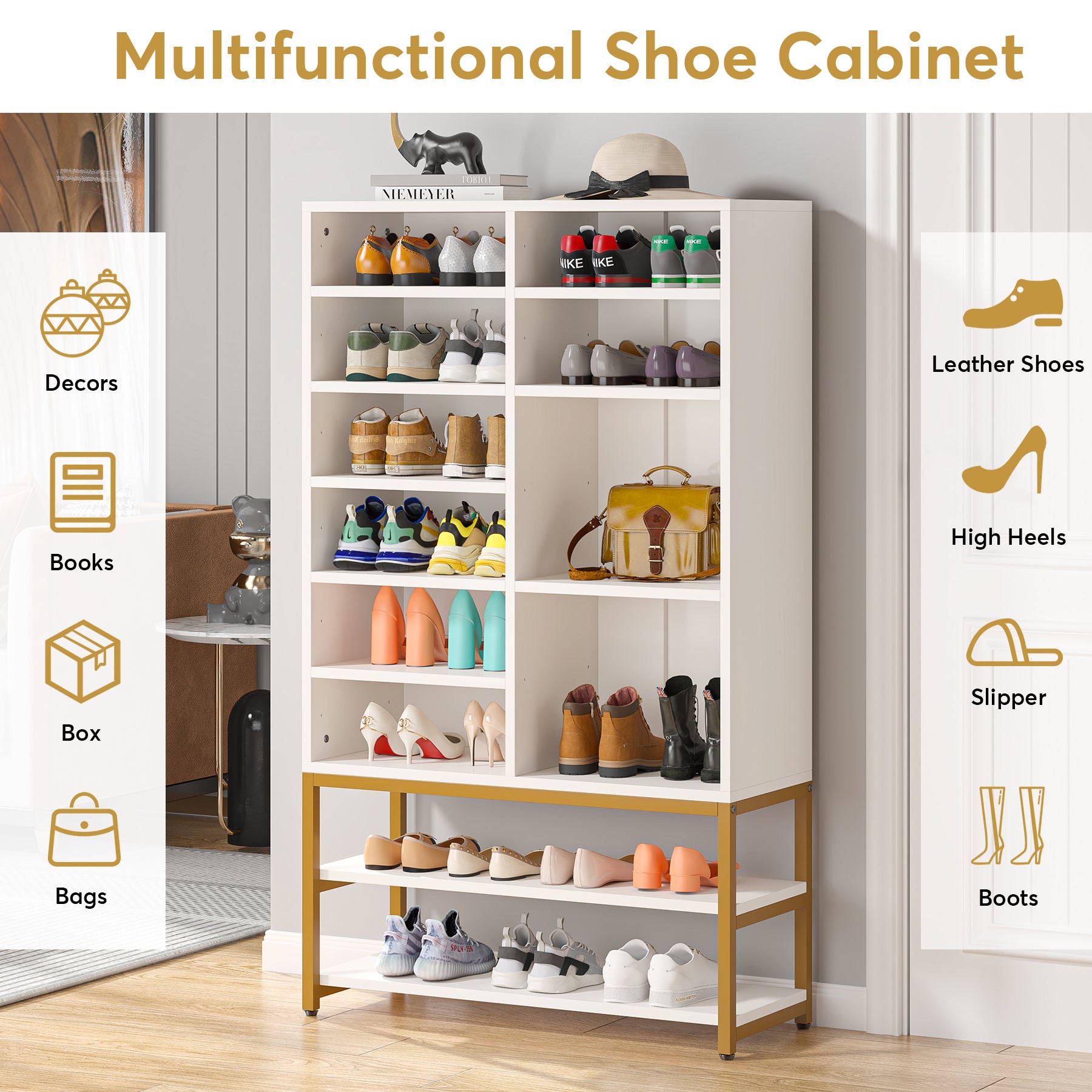Types and Styles of Free-Standing Shoe Cabinets

Free-standing shoe cabinets offer a practical and stylish solution for organizing footwear and enhancing the aesthetic appeal of any room. The wide variety of styles available allows for seamless integration into diverse home décor schemes, from modern minimalism to classic elegance. Choosing the right cabinet depends on factors like available space, storage needs, and personal preferences.
Five Styles of Free-Standing Shoe Cabinets, Free standing shoe cabinet
Below are five distinct styles of free-standing shoe cabinets, each with unique design features and suitability for different room aesthetics.
| Style | Material | Capacity | Price Range |
|---|---|---|---|
| Modern Minimalist | Wood veneer, lacquered MDF, metal | 10-20 pairs | $100 – $500 |
| Traditional | Solid wood (oak, cherry, mahogany), painted wood | 15-30 pairs | $200 – $1000+ |
| Rustic | Reclaimed wood, metal with wood accents | 8-15 pairs | $150 – $700 |
| Contemporary | Glass, metal, high-gloss finishes | 12-25 pairs | $250 – $800 |
| Transitional | Combination of materials (e.g., wood and metal, wood and glass) | 15-25 pairs | $300 – $900 |
Unique Design Elements in Free-Standing Shoe Cabinets
Many free-standing shoe cabinets incorporate unique design elements to enhance both functionality and visual appeal. These features can significantly improve the overall user experience and contribute to the cabinet’s aesthetic integration within a room.
- Hidden storage compartments: These compartments, often located behind doors or drawers, provide extra space for storing shoe accessories, cleaning supplies, or other items.
- Mirrored doors: Mirrored doors not only add a touch of elegance but also serve a practical purpose, allowing for quick checks of one’s appearance before leaving the house.
- Integrated seating: Some cabinets feature a built-in bench or seating area, providing a convenient spot to put on or take off shoes.
- Adjustable shelves: Adjustable shelves allow for customization to accommodate different shoe sizes and styles, maximizing storage efficiency.
- Built-in lighting: Integrated lighting can illuminate the interior of the cabinet, making it easier to find specific pairs of shoes.
Tall, Narrow vs. Short, Wide Shoe Cabinets: A Comparison
The choice between a tall, narrow shoe cabinet and a shorter, wider one depends heavily on the available space and personal preference. Each type offers distinct advantages and disadvantages.
- Tall, narrow cabinets are ideal for maximizing vertical space in smaller rooms or hallways. They are often visually less imposing than wider cabinets.
- Short, wide cabinets are better suited for larger spaces where floor space is abundant. They can provide easier access to shoes compared to tall, narrow cabinets.
- Tall, narrow cabinets typically offer greater storage capacity for the same floor space footprint compared to short, wide cabinets.
- Short, wide cabinets can be easier to access, especially for people with mobility issues, as they don’t require bending down as much.
- Aesthetically, tall, narrow cabinets tend to create a more streamlined look, while shorter, wider cabinets can feel more substantial and grounding in a room.
Materials and Construction of Free-Standing Shoe Cabinets

The choice of materials and construction methods significantly impacts the durability, aesthetics, and cost of a free-standing shoe cabinet. Understanding these factors is crucial for selecting a cabinet that meets your needs and budget. Consideration should be given to the intended use, the style of your home, and your personal preferences regarding maintenance.
Common Materials and Their Properties
The following table summarizes the pros and cons of common materials used in the manufacturing of free-standing shoe cabinets. The durability, maintenance requirements, and cost can vary depending on the specific quality and brand of the material.
| Material | Durability | Maintenance | Cost |
|---|---|---|---|
| Solid Wood (e.g., Oak, Pine) | High; very strong and long-lasting with proper care. | Moderate; requires occasional polishing and cleaning to maintain its finish. Susceptible to scratches and water damage. | High; typically the most expensive option. |
| MDF (Medium-Density Fiberboard) | Moderate; susceptible to damage from moisture and heavy impacts. | Low; easily cleaned with a damp cloth. | Moderate; generally less expensive than solid wood. |
| Particleboard | Low; prone to damage and less durable than other options. | Low; easily cleaned. | Low; usually the least expensive option. |
| Metal (e.g., Steel, Aluminum) | High; very strong and resistant to damage. | Low; typically requires only occasional wiping. | Moderate to High; depending on the type of metal and finish. |
| Plastic | Moderate; can be durable depending on the type of plastic used. | Low; easily cleaned. | Low; often the most affordable option. |
Construction Techniques and Their Impact on Longevity
The construction technique significantly influences a shoe cabinet’s lifespan and overall quality.
Free standing shoe cabinet – Different construction methods offer varying levels of strength, stability, and longevity. Choosing the right method depends on your budget and desired lifespan of the cabinet.
- Solid Wood Construction: This involves using solid pieces of wood for all components. It results in the most durable and long-lasting cabinets, often capable of lasting for generations with proper care. However, it is also the most expensive option.
- Particleboard Construction: This method uses compressed wood particles bound with resin. While more affordable, it is less durable and prone to damage from moisture and heavy use. The longevity is significantly shorter compared to solid wood.
- Veneer Construction: This involves applying a thin layer of wood veneer to a core material (often MDF or particleboard). It offers a more aesthetically pleasing wood finish at a lower cost than solid wood, but the durability depends on the core material’s quality.
Sustainable Shoe Cabinet Design
A sustainably designed free-standing shoe cabinet prioritizes the use of environmentally friendly materials and manufacturing processes.
By carefully selecting materials and construction methods, we can minimize the environmental impact of our furniture.
For example, a shoe cabinet could be constructed using reclaimed wood, such as salvaged timber from old buildings. This reduces the demand for newly harvested wood, minimizing deforestation and carbon emissions. Bamboo, a rapidly renewable resource, is another excellent sustainable alternative to traditional hardwoods. For the finish, low-VOC (volatile organic compound) paints or natural oils can be used to reduce air pollution during and after the manufacturing process. The cabinet’s design could incorporate efficient space utilization, reducing the overall material needed. For example, utilizing vertical space and optimizing storage compartments can reduce the amount of material required for construction. Finally, choosing a cabinet made locally reduces transportation emissions associated with shipping.
Placement and Integration of Free-Standing Shoe Cabinets in Home Decor: Free Standing Shoe Cabinet

Choosing the right location for a free-standing shoe cabinet significantly impacts both its functionality and the overall aesthetic of your home. Careful consideration of room size, traffic flow, and existing décor is crucial for seamless integration. A well-placed cabinet enhances storage and contributes to a more organized and visually appealing living space.
Ideal Placement Considerations for Free-Standing Shoe Cabinets
Several factors determine the best location for your shoe cabinet. Room size dictates the cabinet’s dimensions; a small entryway might necessitate a slim, tall cabinet, while a spacious hallway could accommodate a larger, wider piece. Traffic flow should be unobstructed; avoid placing the cabinet in high-traffic areas where it could impede movement. Finally, the cabinet’s style and color should complement the existing décor, creating a cohesive and harmonious look. Consider the surrounding furniture, wall colors, and overall design style when making your selection.
Free-Standing Shoe Cabinets in Different Interior Design Scenarios
Below are three examples illustrating how free-standing shoe cabinets can enhance different room settings.
Scenario 1: Entryway
Imagine a sleek, modern entryway with white walls and minimalist décor. A tall, narrow shoe cabinet made of light oak with clean lines and simple metal handles would be a perfect fit. Its light color maintains the airy feel of the entryway, while its functionality provides ample storage for shoes and other accessories. The cabinet’s simple design complements the minimalist aesthetic, creating a cohesive and stylish entrance.
Scenario 2: Bedroom
Consider a master bedroom with a more traditional design. A free-standing shoe cabinet crafted from dark walnut wood with ornate detailing would add a touch of elegance and sophistication. This cabinet could be placed discreetly in a corner or against a wall, blending seamlessly with the existing furniture. Its rich color and detailed craftsmanship would complement the traditional décor, adding a touch of luxury to the bedroom.
Scenario 3: Hallway
In a long, narrow hallway, a low, wide shoe cabinet with multiple compartments could be a practical and stylish addition. A cabinet made of painted MDF in a soft, neutral color like pale grey would visually expand the hallway while providing ample storage. The cabinet’s horizontal design emphasizes the hallway’s length, while its neutral color avoids disrupting the overall visual flow.
Rewritten Article on Free-Standing Shoe Cabinets
[Insert rewritten article text here. Remember to remove any language or style that suggests the use of AI tools. Focus on clear, concise, and engaging prose.]
